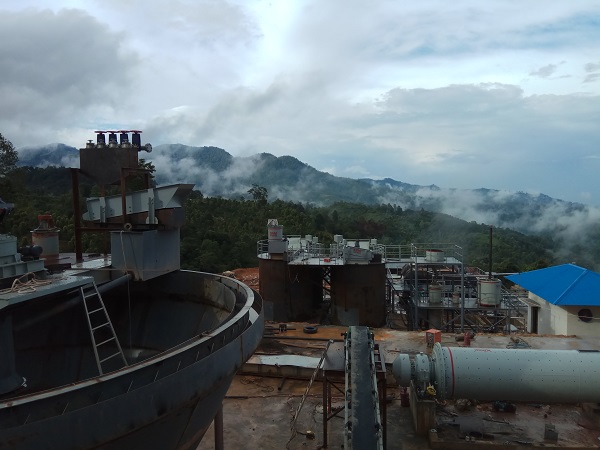With the continuous popularization of carbon neutrality concepts and new energy technologies, strategic resources like cobalt and lithium have been paid more and more attention to their development and utilization. In nature, most cobalt minerals are symbiotic with metal minerals such as iron, copper and nickel, and single cobalt minerals are rare. Common cobalt-bearing metal deposits include copper-nickel-cobalt ore, copper-cobalt ore, iron-cobalt ore and asbolite ore. This article will introduce the extraction process of these 4 common cobalt ores.
1. Copper-Nickel-Cobalt Ore Extraction Process
In the copper-nickel-cobalt deposit, the main metal minerals are copper, cobalt, nickel, etc., the main gangue minerals are quartz, muscovite, biotite, plagioclase, serpentine, etc. There are many kinds of sulfide minerals. At the same time, copper, nickel, cobalt and arsenic minerals have a close symbiotic relationship, and there are many independent minerals of arsenic.
The copper-nickel-cobalt ore is generally processed by a mixed flotation process to obtain a copper-cobalt-nickel mixed concentrate with relatively large enrichment. It can be sold at the same time or smelted.It should be noted that this kind of ore contains a lot of gangue minerals that are easy to pumice. And it is easy to produce secondary sludge during the grinding process, which affects the enrichment of copper-nickel-cobalt concentrates. Selective flocculation desliming - mixed flotation process can be used. The copper-nickel-cobalt concentrate with relatively high enrichment is first mixed by flotation, and then the cobalt minerals are separated and extracted by hydrometallurgy.

There are two kinds of copper-cobalt deposits, one of which often contains copper, lead, zinc, silver and other polymetallic minerals. The other contains minerals such as copper, cobalt and uranium. There are some differences in the extraction process between the two types of deposits, which are mostly determined by the difference of floatability of copper and cobalt minerals. It generally includes differential flotation flow and mixed flotation flow.
When the copper-cobalt ore is processed by the differential flotation process, the copper is generally preferentially flotated and then the cobalt is flotated. Generally, lime is used as inhibitor, YK1-11 is used as copper collector, and butyl xanthate is used as cobalt collector. And copper concentrate and cobalt sulfide concentrate can be obtained respectively. Mixed copper and cobalt concentrate can be obtained by adding sodium silicate, lime and other inhibitors to inhibit gangue minerals.
The main cobalt-bearing minerals in iron-cobalt deposits are generally pyrite, pyrrhotite and a small amount of chalcopyrite. The main gangue minerals are quartz, try, epidote, biotite, chlorite, etc., with complex components. Cobalt minerals are generally closely associated with iron minerals. Such ores can be processed by flotation, in which the sulfide and magnetite are separated first. Then a small amount of chalcopyrite, pyrite and pyrrhotite are separated by flotation method. At the same time, the magnetite is separated by magnetic separation, and copper concentrate, cobalt sulfide concentrate and iron concentrate are obtained respectively.

Asbolite are mostly produced in weathered deposits. In addition to cobalt, it also contains metal elements such as manganese, copper, nickel, and iron. The recoverable part of the ore is often dominated by complexes of manganese oxide and cobalt oxide. Cobalt minerals have a close symbiotic relationship with manganese minerals and contain more clay, iron slime and limonite. Manganese minerals are generally recovered together with cobalt minerals. Asbolite ore can choose single or combined extraction process. Single extraction methods include gravity separation, magnetic separation, flotation, acid leaching, etc. Combined extraction methods include roasting-flotation method, acid leaching-flotation method. Among them, the acid leaching-flotation method is the most commonly used beneficiation method for asbolite.
The above are the common 4 kinds of cobalt ore extraction process. Cobalt mineral composition is complex. So it is necessary to consider the comprehensive recovery and utilization of different mineral resources when making extraction plan.
If you want to customize the cobalt extraction process, you can contact customer service or leave a message, and we will give you feedback as soon as possible.
© 2021 Yantai KZ Mining Processing Technology & Equipment Inc.